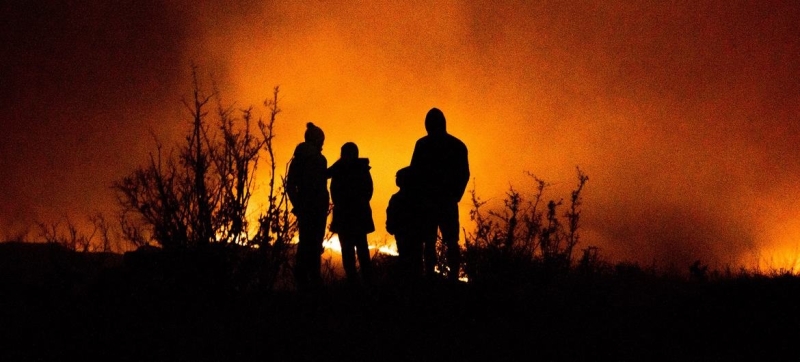News update
- Five Shariah Banks to Merge Into State-run Sammilito Islami Bank |
- Dhaka’s air ‘unhealthy for sensitive groups’ Wednesday morning |
- US proposes that the UN authorize a Gaza stabilization force for 2 years |
- Democrat Zohran Mamdani is elected New York City mayor |
- Martyr Mugdha's brother Snigdha steps into politics with BNP |
World’s Forests at High Risk from Fires, Pests and Warming
GreenWatch Desk:
Environment
2025-11-05, 9:08pm

Global warming is linked to increasingly dry conditions and devastating wildfires across the UNECE region covering Europe, North America, the Caucasus and Central Asia.
Decades of progress in protecting the planet’s carbon-storing forests are at risk as the climate crisis continues to accelerate, UN forestry experts warned on Wednesday.
In a call to world leaders ahead of the COP30 climate summit in Belém, Brazil, the UN Economic Commission for Europe (UNECE) noted that carbon storage in forests has risen by 11 per cent since 1990.
“The message is clear: what we have achieved over the last three decades is now at serious risk from the climate emergency. We cannot afford to lose the planet’s most powerful natural defence,” said UNECE Executive Secretary Tatiana Molcean.
Amid a rising number of wildfires and droughts globally—linked to warmer temperatures, drier conditions, and pest infestations—Ms. Molcean said the world’s forests risk being damaged and overexploited beyond repair.
“The international community, especially leaders gathering in Belém, must recognize that forest protection is no longer just an environmental issue—it is a cornerstone of global carbon security,” she added.
Across Europe, North America, the Caucasus, and Central Asia—the region covered by UNECE—there are more than 1.76 billion hectares of forest, representing over 40 per cent of the global total across three biomes: boreal, temperate, and subtropical.
Although forests in the UNECE region have expanded by an impressive 60 million hectares—with the largest growth in Central Asia and Europe—this is not the case worldwide, where around 10.9 million hectares of forests are lost annually.
Increasing wildfire danger
In 2021, an astonishing 12.6 million hectares burned, “comparable to an area the size of Greece,” said UNECE’s Paola Deda, Director of the Forests, Land, and Housing Division. Estimates also indicate that 73 million hectares are affected by insects and diseases—comparable to the combined area of Spain and Portugal.
“If these trends continue, forests that have been a vital carbon sink could become a source of emissions, undermining global climate goals,” Ms. Deda told journalists in Geneva.
Ongoing forest protection measures supported by UNECE member states include efforts to tackle acid rain across Central Europe, which has historically devastated forests, depleted freshwater fish populations, and threatened ecosystems across the northern hemisphere.
Ticking carbon clock
These measures have contributed to a doubling of areas designated for biodiversity conservation and soil and water protection since 1990. Today, more than 300 million hectares—approximately the size of Italy—benefit from legal protection.
However, climate change impacts “are accelerating forest destruction, threatening to overturn decades of ecological gains,” UNECE warns in its latest report, published every five years. Key concerns include:
Massive destruction from fire, pests, and drought: In 2021 alone, wildfires scorched 12.6 million hectares, while insects, diseases, and other factors affected 73 million hectares in 2019—a trend that continues.
Carbon sink reversal: Forest growth and expansion are slowing in many countries. Catastrophic wildfires could transform forests into carbon sources, undermining Paris Agreement targets.
Irreversible damage: Prolonged drought and heat are pushing ecosystems to their limits. Without stronger policies, forest-related Sustainable Development Goals for 2030 may be unattainable.
Boreal forests’ key role: Arctic boreal forests hold around 32 per cent of global terrestrial carbon stocks and are highly sensitive to climate impacts such as thawing permafrost and wildfires.
Policy prescription
Ahead of COP30, UNECE urges stronger forest protection strategies, including enhanced fire prevention, pest management, large-scale restoration, and prioritizing forests’ environmental, social, and economic benefits.
“The largest forest country in the world is not Brazil—it is Russia,” said Ms. Deda. “Even though the UN climate conference is in the southern hemisphere, forests in the northern hemisphere are crucial to tackling climate change.”

